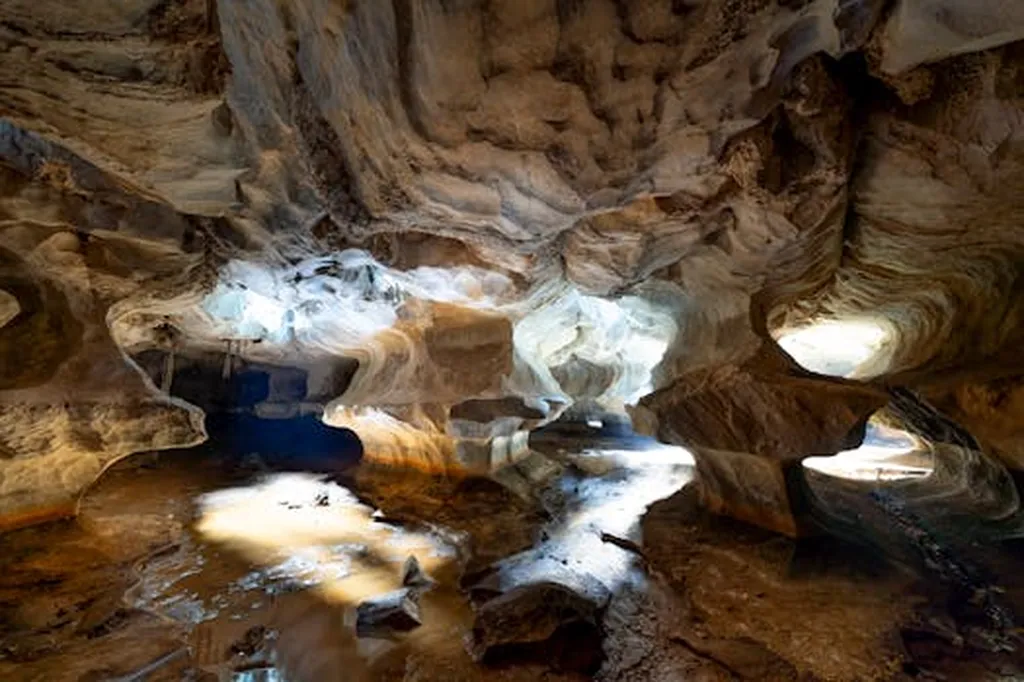In the heart of Southwest China, where karst landscapes dominate the terrain, a groundbreaking study led by Zifan Xu from the Institute of Surface-Earth System Science at Tianjin University is shedding new light on how soil-rock structures influence water balance and runoff responses. Published in the journal *Carsologica Sinica* (which translates to *Karst Science*), this research could have significant implications for water resource management and energy sector investments in karst regions.
Xu and his team set up three large square columns at the Puding Karst Ecosystem Research Station to simulate different soil-rock structures. Each column was designed to mimic the diverse geological conditions found in the region, including combinations of limestone, dolomite, and various soil types. The goal was to understand how these structures affect hydrological processes, particularly the transformation and utilization of water resources.
The study revealed that soil thickness plays a crucial role in water balance and runoff response. “As soil thickness increased, we observed higher evaporation and lower runoff,” Xu explained. “This is because thicker soil can delay the response time of underground runoff, reduce peak flow, and increase the rainfall threshold required for runoff generation.” This finding is particularly relevant for the energy sector, where understanding water availability and runoff patterns is crucial for planning and managing hydropower projects.
The research also highlighted the impact of the underlying rock’s physical properties. Dolomite gravel, for instance, retained more water than limestone blocks, leading to higher evaporation and lower runoff. “The specific surface area of the gravel in the dolomite column is larger, so its evaporation is twice as much as that of the limestone column,” Xu noted. This insight could inform the design of water management strategies in karst areas, ensuring more efficient use of water resources.
One of the most intriguing findings was the relationship between rainfall patterns and runoff responses. The study found that small rainfall events caused higher peaks in columns with thin soil layers, while large rainfall events led to higher peaks in columns with dolomite gravel. “Thicker soil delayed initial runoff and peak flow, especially in small events,” Xu said. This understanding could help energy companies anticipate and manage water flow more effectively, particularly in regions where rainfall patterns are variable.
The implications of this research extend beyond water management. In the energy sector, where water is a critical resource for various processes, understanding the hydrological dynamics of karst regions can lead to more sustainable and efficient practices. For instance, hydropower plants could benefit from better predictions of water availability, while mining operations could optimize their water usage based on the specific soil-rock structures of the area.
As the world grapples with the challenges of climate change and water scarcity, studies like Xu’s provide valuable insights into the complex interplay between geological structures and hydrological processes. By unraveling these relationships, researchers and industry professionals can work together to develop strategies that ensure the sustainable use of water resources in karst regions.
In the words of Xu, “This study reveals the significant impact of different soil-rock structures on hydrological processes in the karst areas of Southwest China. The physical properties of soil-rock structures not only affect the water balance but also determine the rainfall-runoff relationship and runoff characteristics under different rainfall patterns.” As the energy sector continues to evolve, the findings from this research could shape future developments, ensuring a more resilient and sustainable approach to water resource management.

